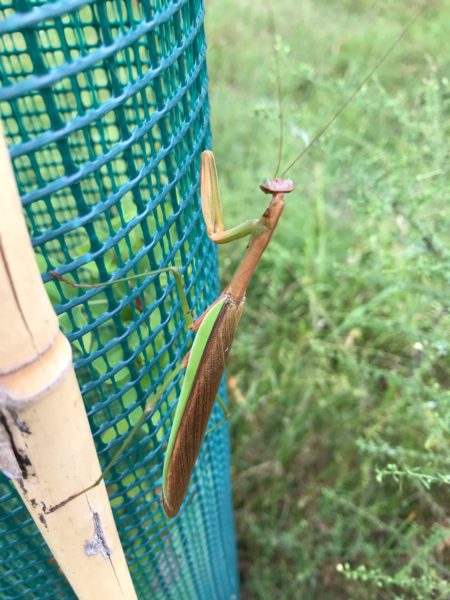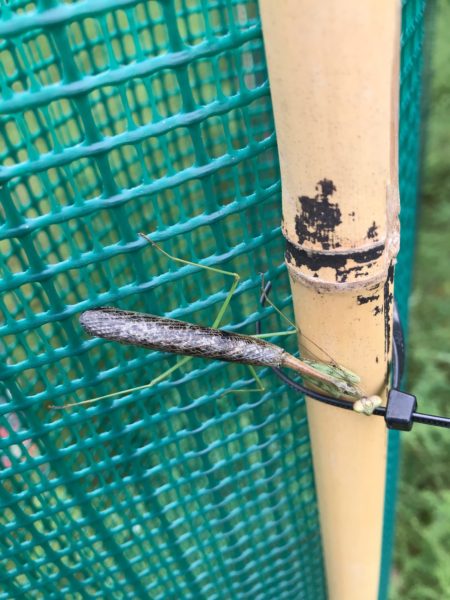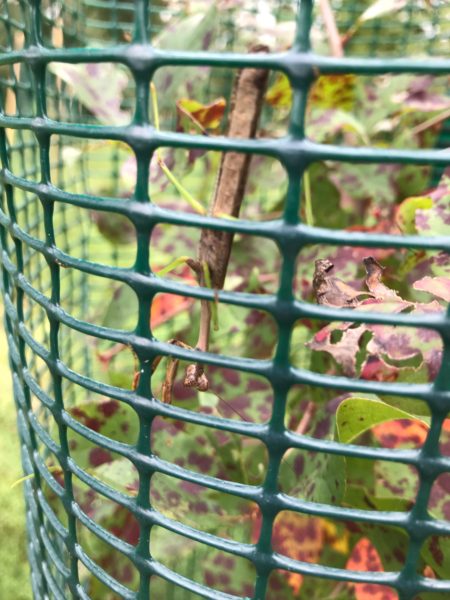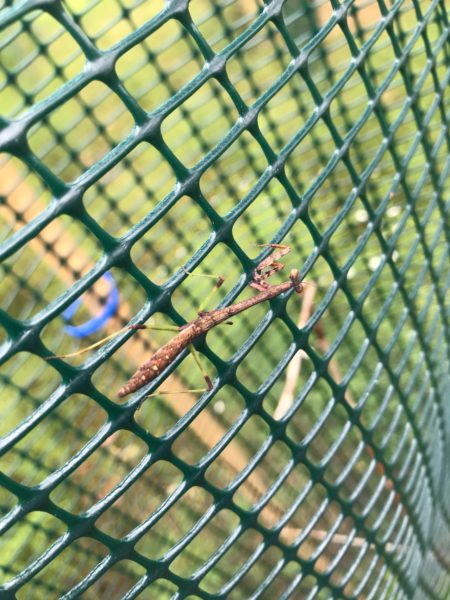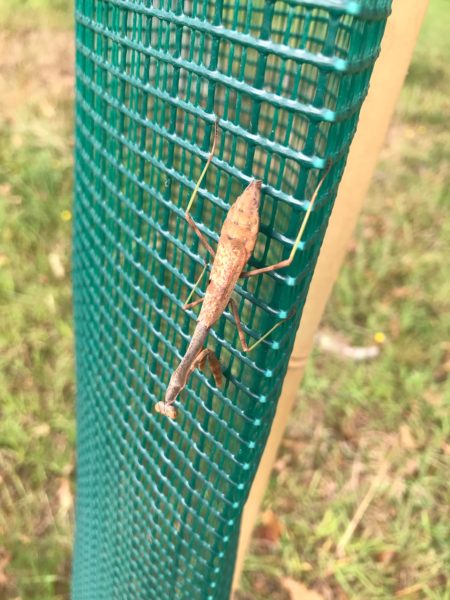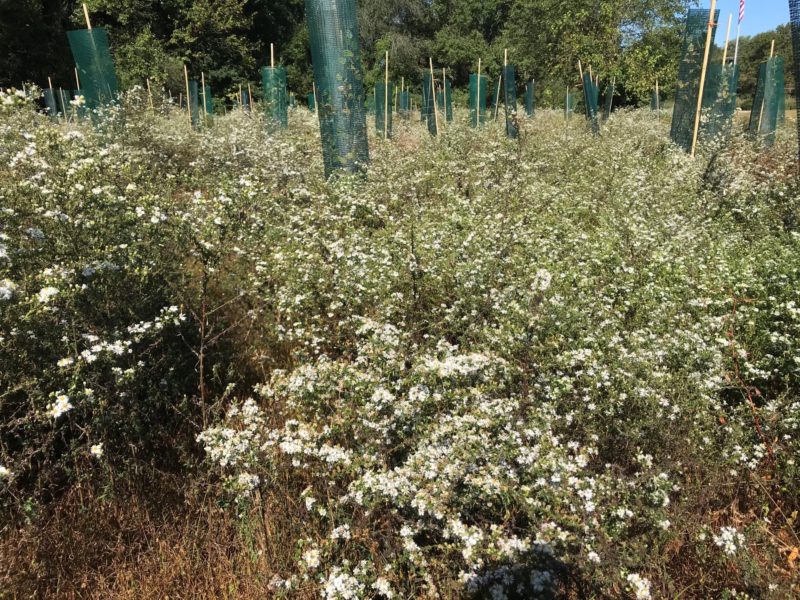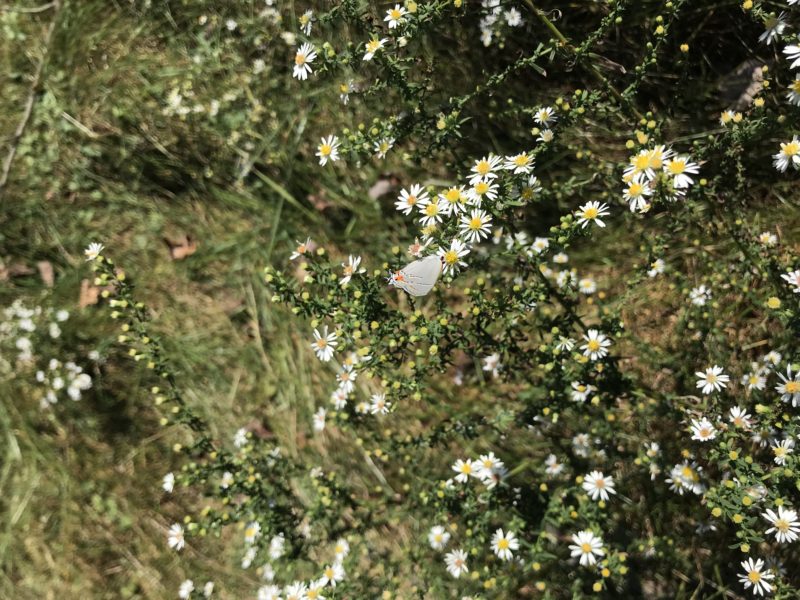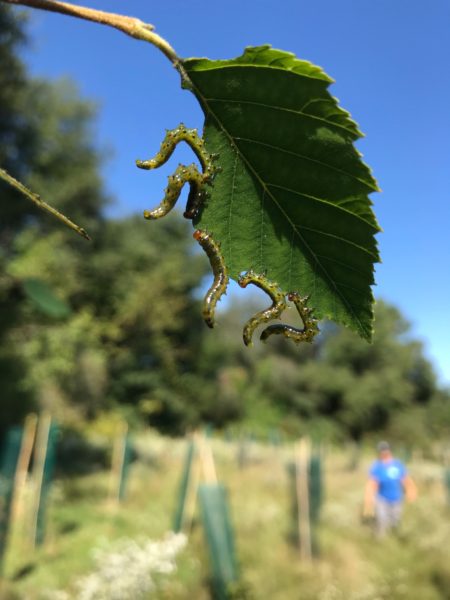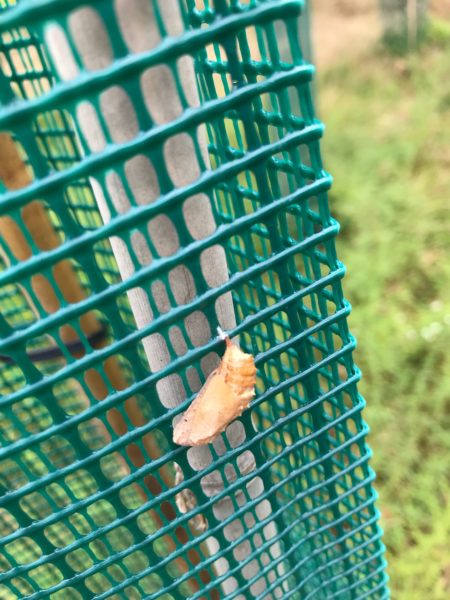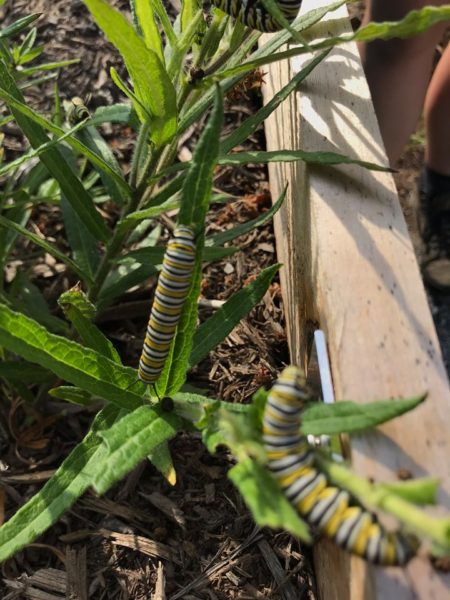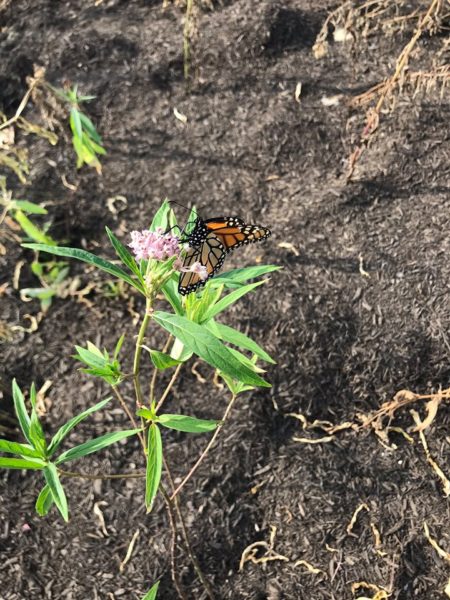While fixing a few of the tree tubes at the American Littoral Society’s Giampietro Park riparian buffer tree planting in Vineland a few weeks ago, we were reminded of the benefits of many green stormwater infrastructure projects for wildlife. The main intent of these projects is to protect and improve the water supply and quality, but of course like all of nature many things are interconnected, and pulling one string affects the whole larger ecosystem. When it comes to wildlife, if you plant it they will come.
The first thing we noticed were a crazy number of praying mantises!
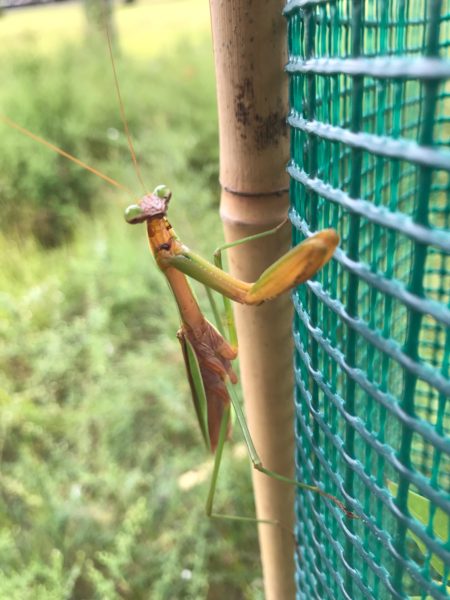
Some fun facts about praying mantises: they are one of the only insect species that has a true sense of hearing (most others only sense vibrations), and their one ear is actually on their abdomen. It can hear ultrasonic sounds, which they use to avoid being eaten by bats since they can hear its ecolocation. They rely mainly on sight though and are one of the only insects with stereo-vision, meaning their eyes can look in the same direction which gives them better depth perception. They can also turn their heads a full 180 degrees, whereas most insects’ necks are too rigid to turn at all. And of course, they are best known for the habit of the females eating the males after mating with them, although this is less common in the wild than in laboratory settings.
EDIT: it turns out that most of the mantises pictured above are likely invasive species… yikes! Native praying mantises only reach a size of about 2-3 inches long. Larger ones are probably either the Chinese mantis or European mantis.
Praying mantises are predators, so what are they all eating? Well that gets us to why this riparian buffer, and lots of other green stormwater infrastructure, are great for wildlife. Thanks to the American Littoral Society, the Vineland Environmental Commission, and volunteers from Vineland High School and CU Maurice River, there are now 1,000+ native trees here. As an added bonus, the simple act of not mowing this one stretch of lawn in the park has caused a huge bloom in flowering plants, specifically one that we think is a type of native aster.
Because of this, there were an even crazier number of bees, butterflies, and moths flying around. So many bees especially that their buzzing was quite loud as we walked about and they would fly away from us en mass. We could also hear many birds chirping in the trees.
There were also lots of caterpillars and a few chrysalises.
Including this big fat caterpillar that reminded me of the caterpillar from A Bugs Life – I wish we had taken a picture looking down on him so you could see his little hands clasped together!
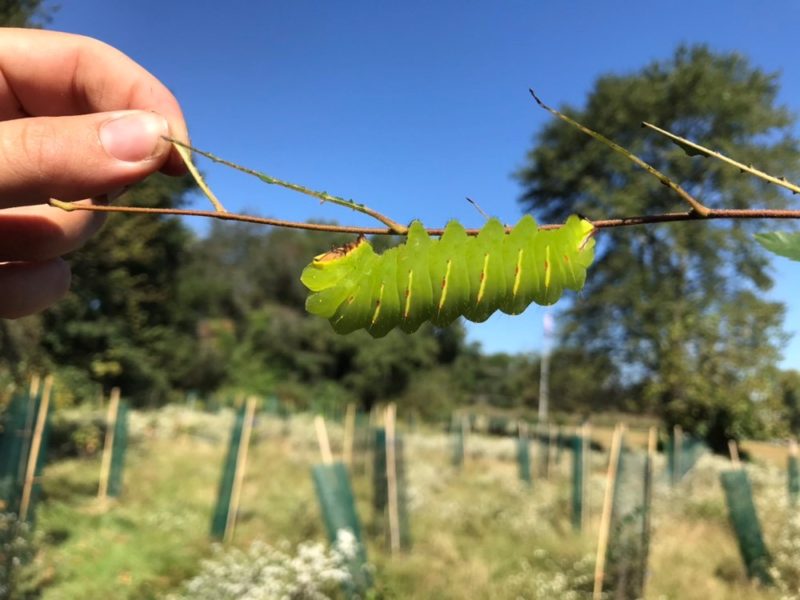
And these aren’t from Giampietro, but we’ve seen lots of monarch butterflies and caterpillars at our planter boxes and rain gardens with milkweed planted in them this year.
Then there’s the wildlife benefits that are more directly related to the projects’ impact on water. All of the impervious surfaces we humans have built like roads, parking lots, sidewalks, and buildings impede rainwater’s natural flow into the groundwater. Instead, it flows down stormdrains, which usually empty directly into local streams. Because of this dynamic, baseflow is lower and there is more of a flash flooding effect during rain events – it all flows directly into streams instead of trickling in through the ground over time.
This causes erosion, scouring away of habitat like leaves and branches, lower water levels during the rest of the time when it isn’t raining, sedimentation, and pollutants flowing directly into waterways without any filtration. All of this, of course, impacts the freshwater ecosystem. And what effects the freshwater also effects the adjacent land and the brackish & saltwater ecosystems of the Delaware Bayshore as these streams and rivers flow down that way.
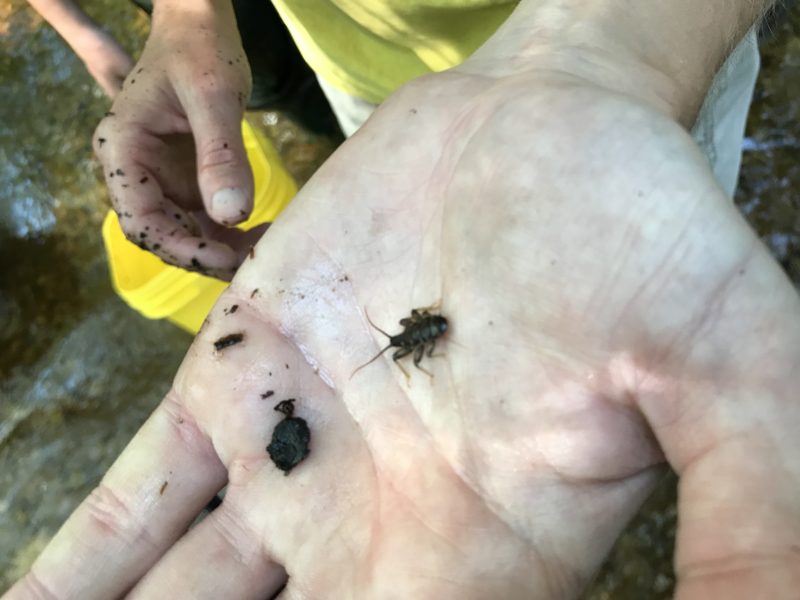
Green stormwater infrastructure such as riparian buffers and rain gardens help to channel that stormwater into the ground and filter out pollutants and sediments before they reach our streams. And, as we’ve seen, when using native plants and allowing areas to return to their natural state all sorts of wildlife can benefit!

